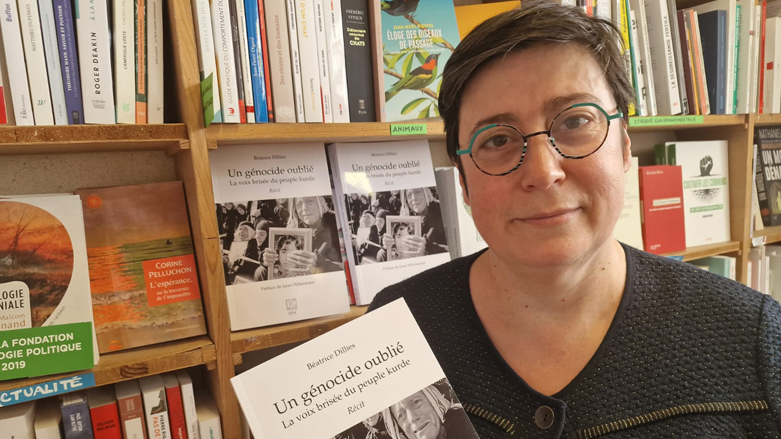'A forgotten genocide, the broken voice of the Kurdish people'

The war in Iraq and Syria has shown the world the tremendous capacity of Kurdish fighters to resist Daesh. They stood up to barbarism while the great nations hesitated to engage. No doubt, this people has a long history of fighting and resistance, having suffered one of the greatest genocides of the 20th century under the orders of Saddam Hussein: Operation Anfal. The West was moved in March 1988 by the Halabja massacre: the tip of an iceberg of suffering, which caused in total the deaths of 182,000 Kurds, victims of a genocidal policy initiated in 1968 by the Baathist regime of Saddam.
This book plunges us into the heart of the tragedy of a people whose existence was denied in 1923 by the signatories of the Treaty of Lausanne. A story that the world must face, as does Snur – a common thread of this investigation – who discovers why her voice broke when she was a baby one day in Aug. 1988, when Chemical Ali had sent his Sarin bombs.
Snur never went to school because of her injuries, although she did began to speak gradually at the age of 12. She has not completely overcome her disability, even though today she is doing well. So, with Kavout Mahy, my main translator, we told her about our encounters with genocide survivors in all regions of Kurdistan just like a history lesson at home. She has become the red thread of this book and has allowed the ellipses to fill in the little holes over 50 years of history.
Snur plays the role of Candide (the title of an 18th-Century book by the French philosopher Voltaire). Through her reactions, her questions, and the answers we give her, Snur allows us to project Kurdish history over several years, from 1968 to 2018.
With the help of Kavout, but also of his father Zoubeyr, his uncle Ismaël, their friend Osmane and two other French-speaking Kurds, I interviewed more than 100 survivors of all the great massacres suffered by the Kurds these last 50 years. Headlining the group of interviewees were three of the judges who condemned Saddam Hussein and his accomplices. I had access to some pretty terrible video archives, I have to say. However, I had received parts of the investigation file against Saddam Hussein and Ali Hassan al-Majid. This allowed me to gather a lot of information.
The result is this book, written like a historical novel, with very colorful, almost cinematographic writing, and it immerses Snur and readers in the heart of the important periods of Kurdish history. Maps help French readers understand the book's narrative.
Pierre Perret, a famous French singer who wrote "La Petite Kurde" in 1992, wrote the book's afterword. And Joost Hiltermann, former head of the Human Rights Watch in Iraq, wrote the preface. The preface was followed with an introduction to the Kurdish question, from the end of the 19th century to the Treaty of Lausanne, which helps explain the context of the book's setting—the past 50 years.
I have also chosen to write 21 chapters for this book. 21, a symbolic number, since the sun in the center of the Kurdistan flag has 21 rays, and it is also the day of Newroz, March 21.
I consider the official recognition of the Kurdish genocide by France first, and then the entire international community participating in the rebirth of the Kurds, a people who have already shown resilience, as the name that I chose for my blog: The Kurdish Phoenix (Le Phénix Kurde, in French). But Kurds need recognition. Helping the victims heal their physical and moral wounds to allow them to rebuild themselves is a critical condition for helping Kurdistan move forward.
Disclaimer: the views and opinions expressed in this article are those of the author and do not explicitly and/or necessarily reflect the views and opinions of Kurdistan 24.
No comments:
Post a Comment